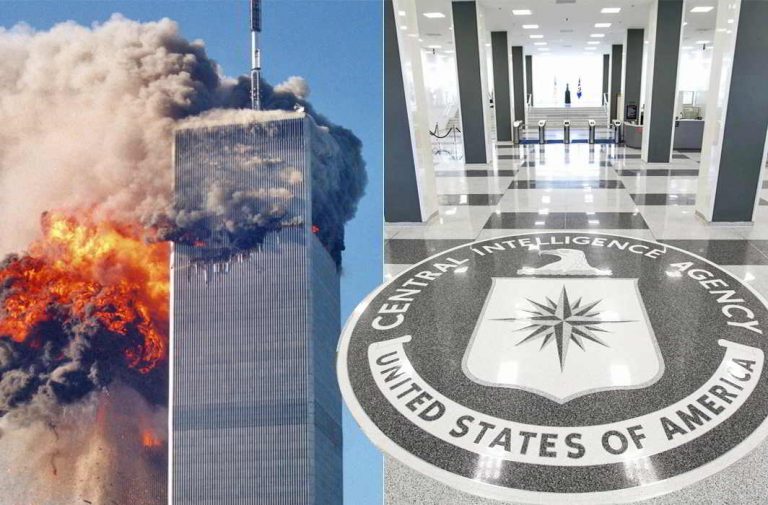
Declassified CIA documents reveal the sequence of decisions, arguments and acts, post-9/11
~By Parsa Venkateshwar Rao Jr
With US President Donald Trump indicating the approval of torture of terror suspects, there is righteous indignation among Trump-haters and Trump-baiters that the arch-villain—no one seems to use “arch-fiend” in these un-theological times—is showing his true colours. But the recently declassified Central Intelligence Agency (CIA) classified documents tell the story of the systematic use of torture against terror suspects in the wake of the September 11, 2001 terrorist attacks in New York and Washington. The documents show that preparations had been made for detention of Islamic militants, without caring for international law and the Geneva Conventions, months before the launch of the war against the Taliban regime in Afghanistan and Al Qaeda in November, 2001.
President George W Bush issued a Memorandum of Notification (MON) on September 17, 2001 authorising the CIA to “undertake capture and detention operation”, according to Report of Investigation of the Office of Inspector General of the Central Intelligence Agency, on Unauthorised Techniques of Interrogation issued on October 29, 2003. The report says in its introductory section that “subsequent to the signing of the MON, “the agency developed a program to capture terrorists and detain them at facilities established and overseen by CIA overseas.”
And it goes on to explain when the need arose to use unacceptable torture methods. It says that in March 2002, an Al Qaeda official was detained and “initially interviewed him using non-aggressive, non-physical elicitation techniques. However, the Agency determined the detainee was withholding imminent threat information. The Agency then moved to new and more aggressive interrogation techniques.”
This sentence is followed by: “In July 2002, CIA requested an opinion from the Department of Justice (DoJ) on whether enhanced interrogation techniques (EITs) proposed by the Agency would violate the criminal prohibition against torture found at Section 2340A of Title 18 of the United States Code. DoJ determined that the application of ten particular EITs would not violate the prohibition against torture. The Agency began employing EITs in August 2002.”
There are two vital bits of information missing in this paragraph. It does not say how many suspected terrorists were captured in November-December 2001 in Afghanistan. The second is whether it suspended interrogation of the Al Qaeda official between March 2002, who was captured in Lahore) and August 2002.
The report then discusses the case of Ab-Al Rahman Al-Nashiri, one of the two High Value Targets (HVTs), a Saudi Arabian national and “recognised senior USB (Usama Bin Laden)”…associated with the planning of the attack on the USS Cole, the 1998 East Africa US Embassy bombings, and a 1997 attempt to smuggle Sagger anti-tank missiles into Saudi Arabia to attack U.S. forced based there” captured in the United Arab Emirates in November, 2002. While he was subjected to standard interrogation techniques at an overseas site, and the interrogators seemed to believe that he was not resisting, “Headquarters disagreed with assessment because Headquarters analysts thought Al-Nashiri was withholding imminent threat information. After “debriefing sessions”, it was decided that he was withholding information, and “reinstated sleep deprivation, hooding and handcuffing.”
The report narrates the specific torture of using between December 28, 2002 and January 1, 2003 an “unloaded handgun as a prop to frighten l-Nashiri” and “On what was probably the same day, but after the use of the handgun, decided to use a power drill to frighten Al-Nashiri…while Al-Nashiri stood naked and hooded… did not touch l-Nashiri with the drill.”
This part of report is followed by a section called “Background” where it is explained that after the Vietnam war, “Agency personnel experienced in the field of interrogations left the Agency or moved to other assignments.” It says that interest revived in the 1980s to teach interrogation techniques and “Because of political sensitivities, the then Deputy Director of Central Intelligence (DDCN), John N McMahon, forbade Agency officers from using the word “interrogation”. Hence, the Agency developed the Human Resource Exploitation (HRE) training program designed to train liaison on interrogation techniques.” In 1984, there were allegation against two interrogation officers of misconduct , and “the Agency began to take proactive steps to ensure Agency personnel understood policy on interrogations, debriefings and human rights issues.” And the report notes “Circa 1986, the Agency terminated the HRE training program because of allegations of human rights abuses.”
The interrogation programme and techniques have been revived in 2002, according to the report.
(The second part will look at the legal arguments
discussed on the issue of torture)
Lead picture: (L-R) September 11, 2001 terrorist attacks (photo YouTube); CIA headquarters in Virginia, US

